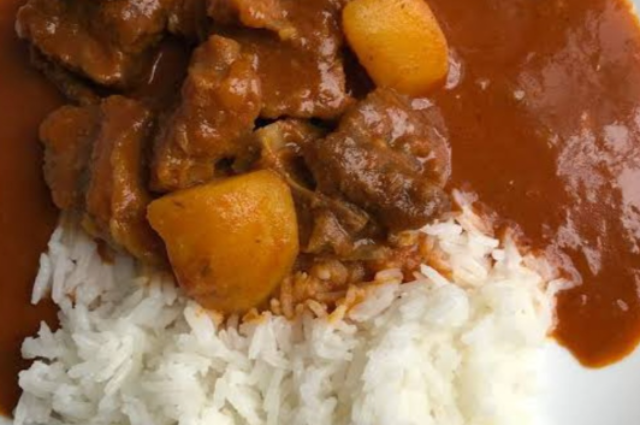
We are a typical Odia family. We love our Jaganaath, our Sambalpuri saree, and our twenty-six cores of Deva-devi.
We also love Datamatics bhata. But we love mutton curry a lot. We are always mutton-bhokila (hungry). Mutton curry is a prestige food for us.
Though in recent times, Biryani has become a national food, but still plain mutton curry has not lost its share.
In Odia homes, if guests are there mutton curry is a must. In every feast, in every marriage, in every picnic mutton curry is a must.
There are so many incidents of the fight of baratis in marriages with girls' side if mutton curry isn't prepared properly. Even there are incidents of the groom returning without marriage if barati's are not given mutton curry. At the feast, if you have not put mutton curry on the menu you can't satisfy guests.
We love our mutton jhol and bhat.
Sunday lunch is incomplete without garama-garam mutton curry with plain steamed white rice. Some parts of Odisha can die for mutton curry with puff rice.
Sunday mutton rasoi (cooking) is a family affair for us Odia. The head of the family will go to a special mutton shop on Sunday morning. The mutton bought should be the Khasi 'phadia' (chest) portion. He will take special care of special requests of children like charbi (fat) and kalija (liver).
The mutton is washed properly and marinated with salt and mustard oil for 1 hour.
After 1 hour a hot kadhai mustard oil is poured. Jeers, cardamom, elaichi, dalchini, and bay leaf should be added. Finely sliced onion is fried in this oil. The proportion of onion should be 1/2 of the mutton amount. The onion gives thickness to the gravy. It should be fried red not burnt. At this stage, ginger garlic paste is given in the oil with turmeric powder and a little Kashmiri mirch. After proper frying tomato paste should be given. And salt must be added at this stage as it will help to make the tomato tender. This masala should be fried in oil till the raw smell of ginger-garlic must be gone and oil comes out from it. Now the marinated mansa(mutton ) should be added. It should be put in a slow flame. Mutton cooked on slow flame gives an eternal taste. Continue string till water released from mutton dried up. The Mutton is already half-cooked. This is mutton kassa.
Now all the family round up to taste mutton kasha. One-fourth of mutton is consumed. All give their opinion on mutton kasha. More salt, a little more time on slow flame, etc. valuable suggestions to act upon.
What if mutton isn't cooked properly and it is still hard?
Not to worry. Instant desi solutions are available. Grind papay peel and add to mutton. It doesn't affect the taste of curry but helps to make mutton tender.
Yes, potato (not peeled) cut into two pieces is added. After little cooking add water and wait till both mutton and potato become tender like cotton. Powdered garam masala is added and mutton curry is ready to serve. It takes 2 hours for the full process to complete.
Combine with steamed white rice... it's heaven. And if it is cooked by Maa, its taste becomes double with her love in it.
Food is our physical, psychological, religious, and social need. And some food goes into the culture.
Mutton or goat meat has it's roots in history stretching back to hundreds of years. It is said that some Jamaicans brought this cuisine to India and Caribbean countries.
In our country, all states have their unique preparation styles.
Laal maas, Goluti kabab, Rogan Josh, Chettinad mutton curry, and Manghso Jhol are all ready to be eaten.
The British people also liked mutton curry a lot. It was among the first few dishes served in Frontier Mail in early 1900.
Though the love of vegetarian food and even vegan food has increased in recent times still a good number of people are crazy for mutton and it's varieties.
We Odia are always ready to welcome our guests with hot mutton jhol and rice.
Please visit Odisha and enjoy our prestige food!
